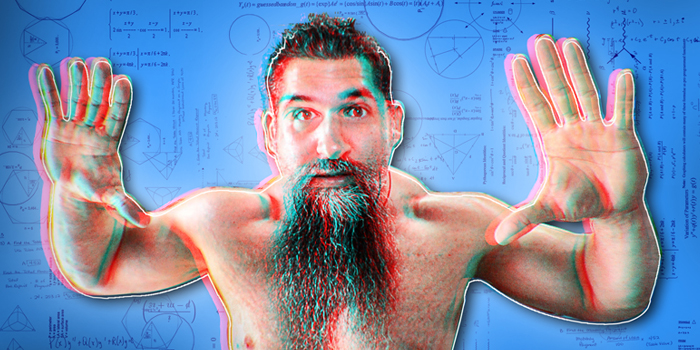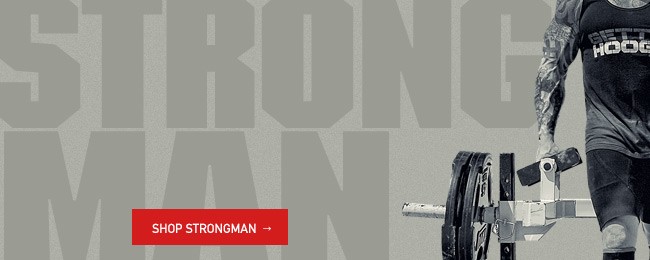
If your strict press and push press look the same or are similar in weight, you're doing something wrong with your push press. In this video, Clint Darden addresses several common issues he sees many of his clients and friends struggle with when pressing overhead with a bar or a log. He addresses the timing of pushing with your shoulders, how to learn to finish the press by using your upper body only at the proper time, and where the weight should be on your feet in each phase of the movement.
First, Clint notes that your dip down should be somewhere around 10% of your total height; it shouldn't be deep and it shouldn't be slow. A good downward dip before a push press uses the same principle as bouncing a barbell off the chest for the bench press: the rep is hardest when you descend slowly and pause at the bottom, and it's easiest when you descend quickly and reverse direction. So when you dip, dip quick, just like you're going to jump to touch a basketball rim. Quick dip, quick jump.
Clint then addresses where on your feet you want the weight. As you begin your dip, the pressure should be outside, on the blades of your feet. As you squat down the weight will continue to push laterally on your feet as you keep your knees going outside instead of forward. This is an especially important point because many lifters fail to keep their knees out, resulting in knee pain from push pressing. After you reach the bottom of your dip and begin to ascend using leg drive, the weight will tilt more inward with your feet and then finally onto your toes as you reach full extension.
Darden sees a lot of people dip and push but fail to ever get on their toes. When this happens, you're left to push entirely from your upper body and the push press has become a strict press. If you push using your shoulders, chest, triceps, or other muscles in the upper body before you lock out your knees and your ankles, you've lost all of your leg drive. He says to think of it as a punch: if you want to punch through something and you're going to use your legs to do it, you can't start punching before your back leg has kicked out. Without timing it right, you lose your leg drive, so it's very important to be critical of leg drive.
WATCH: Isometric Deadlifts vs. Paused Deadlifts
To get the most out of your leg drive, you want to finish pushing with your legs before you start pushing with your upper body. When this happens, ideally you've raised the bar to a considerable height. For a log, it should reach nose level before your upper body takes over pressing. With a weightlifting bar, it should reach overhead, very near lockout. Clint says to think of it as a few simple steps: log or bar in a clean position, dip down quickly with your knees out, drive up, and let the log carry through to the top with no shoulders and no pressing until the very end. If the log does not come off your chest by leg use only, you aren't using your legs and you're missing an enormous opportunity to move more weight.
Clint demonstrates this process by using a log and moving it utilizing only leg drive. He then adds commentary to explain what he's doing in each phase of the movement.










1 Comment